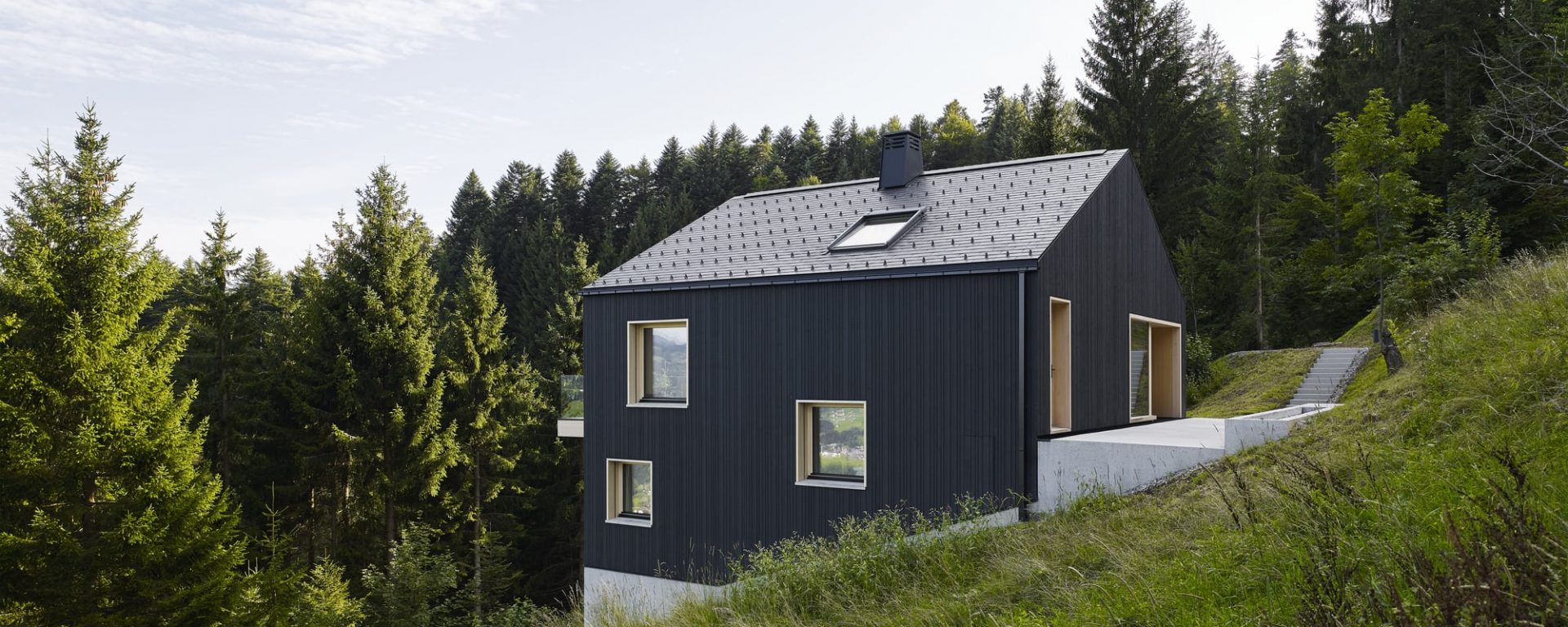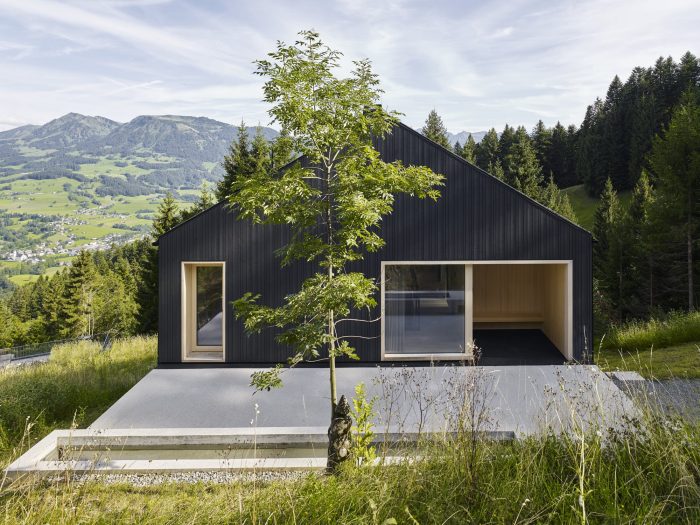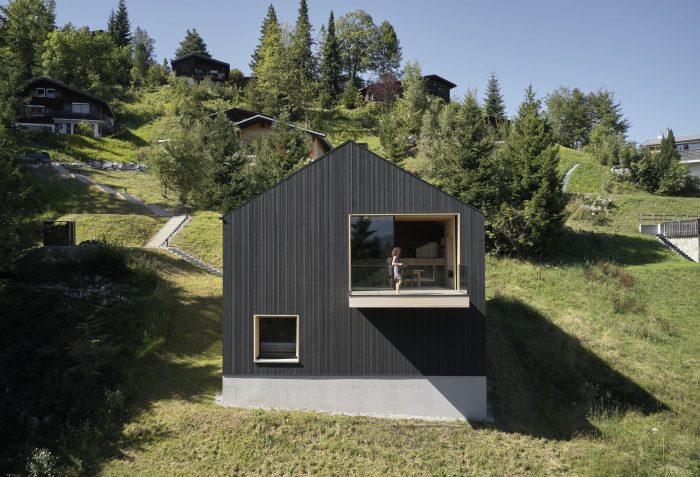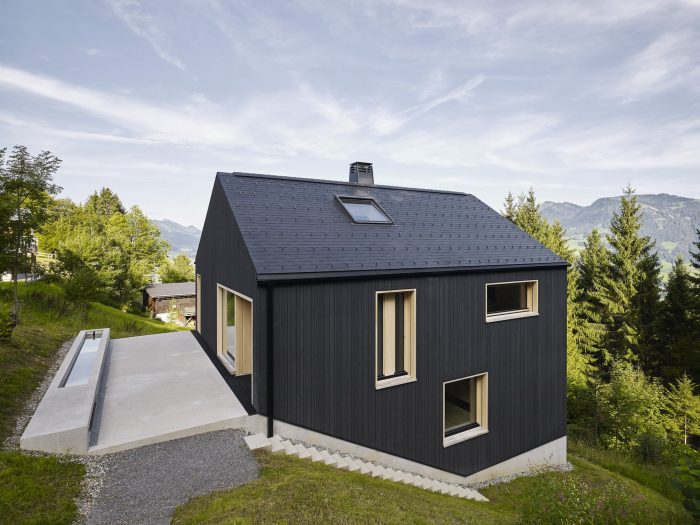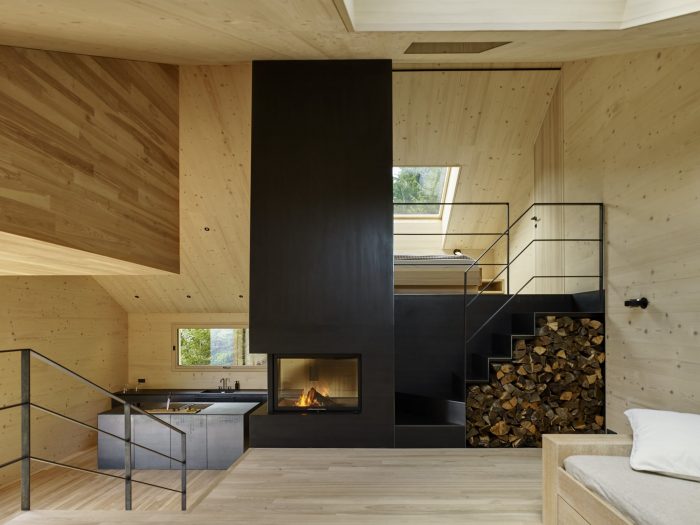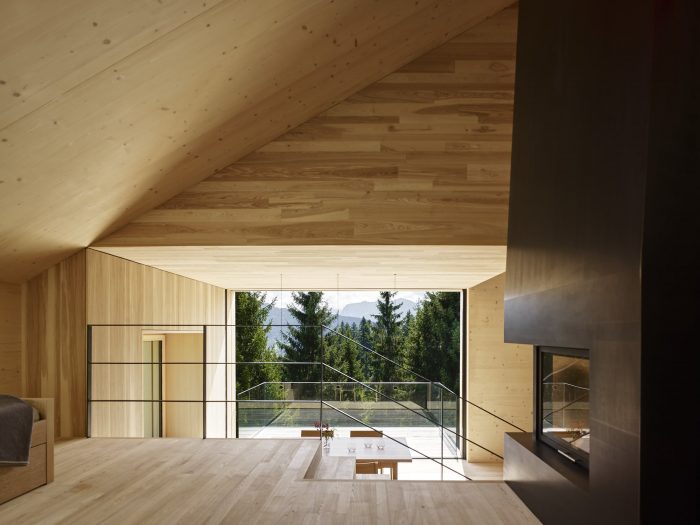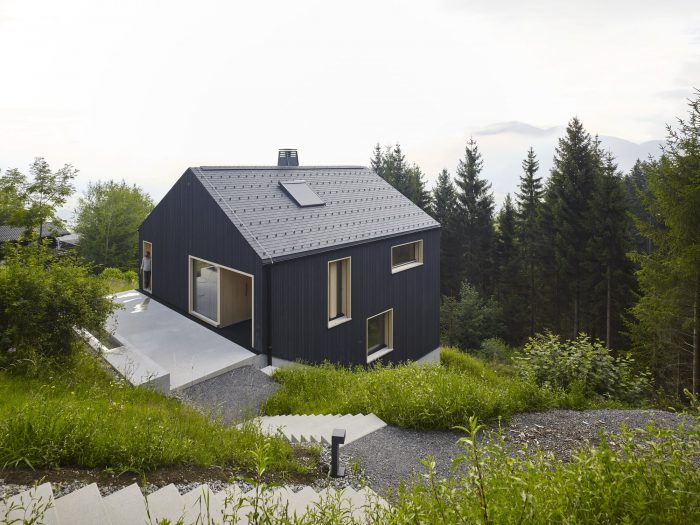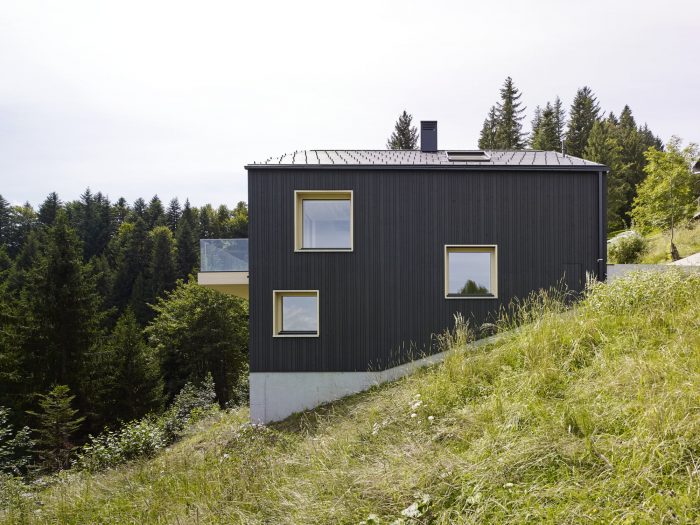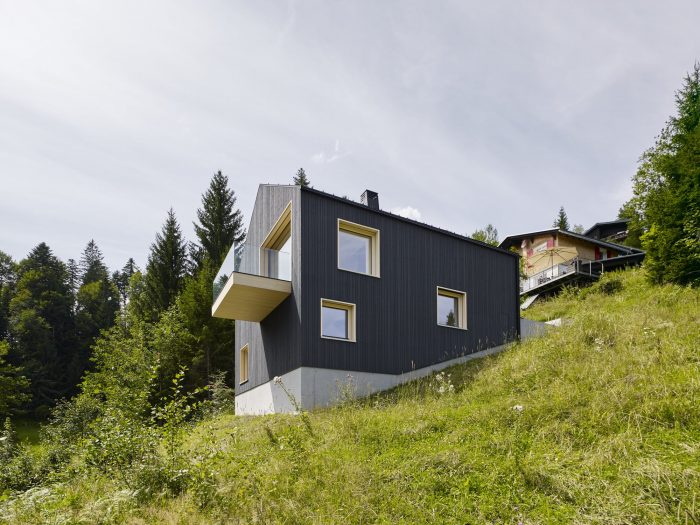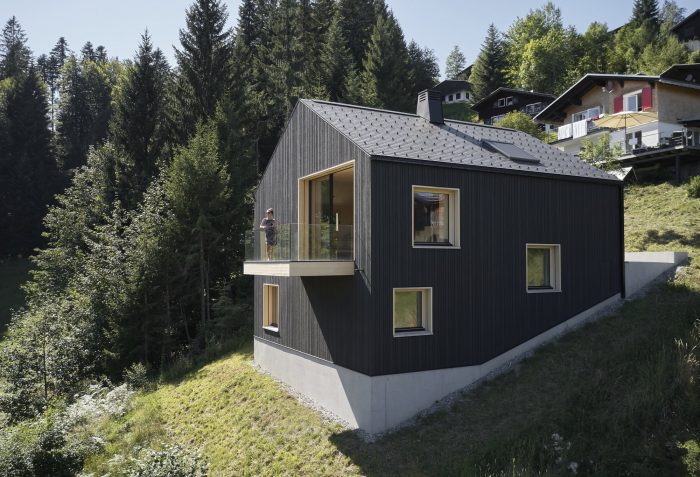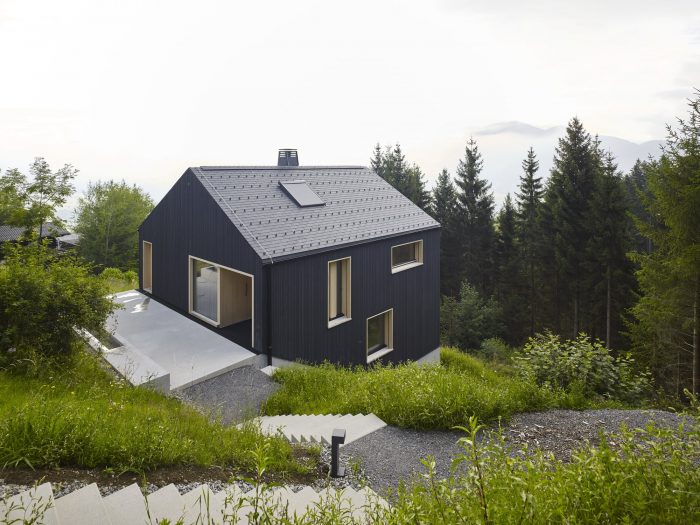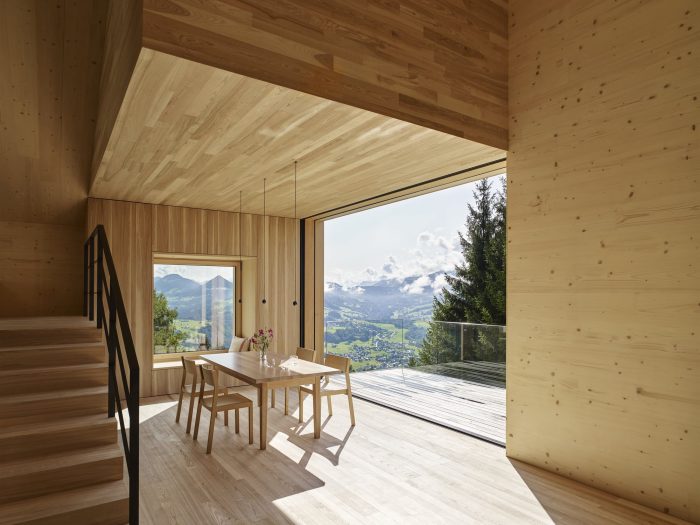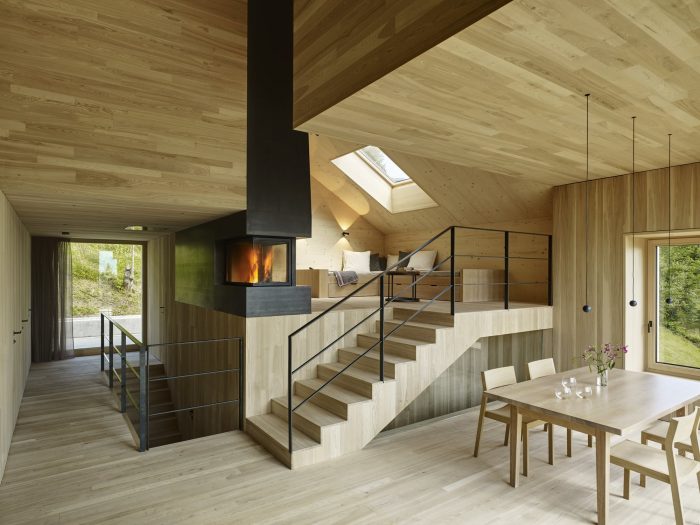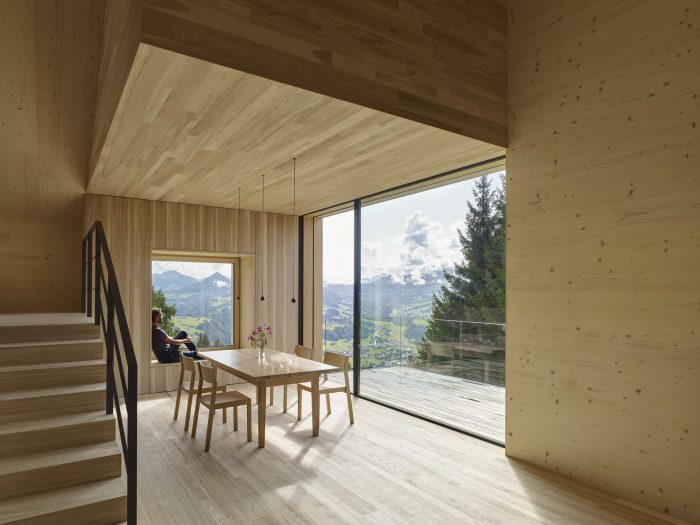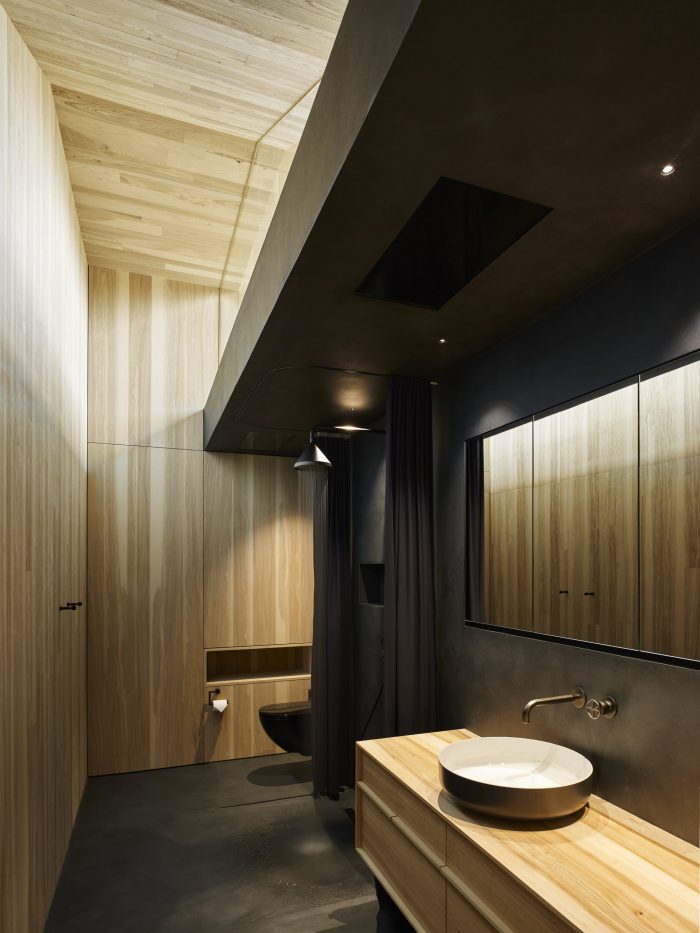在对60年代的集装箱房屋进行检查后,很明显,扩建或重新利用该建筑在经济上是不可行的。我们决定重新利用现有的地基和它们的尺寸来建造一个可以容纳客户全家的新建筑。我们的目标是保持与周围建筑的比例、形式和方向一致,并且仍然实现一个现代的自信的建筑,代表区域的建筑方法。因此,采用实木结构的决定是明确的,因为它不仅提供了结构和热力方面的优势,而且在内部形成了非常真实和温暖的表面。墙壁和天花板元件都是预制的,有必要的安装开口,这需要我们的精确规划。
After inspection of the 60`s container home, it was clear that an extension or repurposing of the building was economically not viable. We made the decision to reuse the existing foundations and their dimensions for a new building that could house the client’s whole family. Our goal was to keep proportions, form, and orientation in line with the surrounding buildings and still achieve a modern confident building that represents the regional construction methods. With that, the decision for a solid wood construction was clear, as it offered not only structural and thermic advantages but made for a very authentic and warm surface on the inside. Wall and ceiling elements were prefabricated with the necessary openings for installation, which required precise planning on our part.
窗户的开口提供了周围Bregenzerwald森林的特定视角。其偏远的位置在附近道路的尽头下面,使得70级长的楼梯成为唯一可能的通道。
The window openings provided specific viewing angles of the surrounding Bregenzerwald forest. Its remote location beneath the end of the nearby road makes al 70 steps long stairway the only possible access route.
为了提供一个更合适的入口,建筑向南移动了1.5米。建筑物的混凝土基座延伸到一个小的入口广场,在北部有一个喷泉的框架。通过调整坡度的建筑和分层,创造了额外的生活空间。这也让我们有了一个独特的、立体的生活体验。例如,楼下的浴室通过客厅楼梯下的玻璃缝隙获得自然光。
To make for a more suitable entrance the building was moved 1.5 meters southwards. The concrete base of the building extends into a small entrance square framed by a fountain in the north. Through the slope-adjusted construction and split levels, additional living space was created. It also allows for a unique and three-dimensional living experience. The downstairs bathroom for example gets natural light through a glass slit under the living room stairway.
这个项目的另一个重要元素是舒适内敛的空间和开放外向的空间之间的对比。卧室特意保留了低矮的天花板,非常适合隐私和亲近。另一方面,厨房、用餐区和客厅横跨几层,可以通过一个大的推拉窗向风景开放。高度的变化使生活空间更加亲密,同时又不失与餐厅和厨房的联系。正如北半球的小木屋一样,一个黑钢炉是生活空间的中心点。
Another important element of this project is the contrast between cozy introverted spaces and open, outgoing ones. The bedrooms are kept purposely small with low ceilings, perfect for privacy and intimacy. On the other hand, the kitchen, dining area, and living room span over several levels and can be opened up towards the scenery through a big sliding window. The change in elevation makes the living space more intimate, without losing connection to the dining and kitchen. And as is commonplace for cabins in the northern hemisphere a furnace in black steel is the centerpiece of the living space.
Architects: Architektur-SCHWEIGHOFER
Area : 149 m²
Year : 2019
Photographs :Marc Lins
Lead Architects : Stefan Schweighofer, Christof Bauer
Structural Engineering : Büro ZTE Leitner Eric
Earthworks : Geser Bau Gmbh
Electrical Engineering : Fässler Wolfgang Gmbh
Roofing : Ing. Gunter Rusch Gmbh
Geologist : Büro Geomac
Windows : Schwarzmann Fenster und Türen aus Holz e.U.
City : Fontanella
Country : Austria

